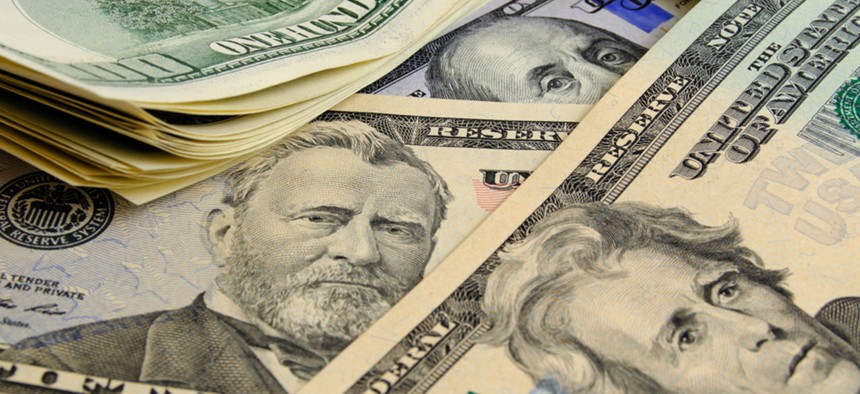
Rrraum/Shutterstock.com
How to Figure Your 2016 Pay Raise
A look at what next year’s boost will mean for you.
Federal employees can breathe a sigh of relief now that President Obama has made next year’s 1.3 percent pay raise official, with a Dec. 18 executive order. What will the raise mean for your paycheck? The answer depends on where you live. For the first time since 2010, the raise will be split between a 1 percent across-the-board hike and a locality increase that hovers around 0.3 percent but will be bigger for employees in expensive regions such as California’s Bay Area and Washington, D.C.
To calculate what your new salary will be in 2016, start by multiplying your 2015 base pay by 0.01 to reflect the across-the-board hike of 1 percent. Then add that number to your base pay. Next, take the new number and multiply it by the total locality increase for your area (which you can find in the chart below). Add this to the previous number to arrive at your total pay for 2016.
For example, if you are a GS 1, Step 1 employee in Washington, D.C., you would first take your 2015 base pay of $18,161 (found on this table from the Office of Personnel Management) and multiply it by 1 percent, or 0.01. That would give you $181.61. Then add this to the base pay, getting $18,343. Next, multiply this new number ($18,343) by 0.2478 to reflect the 24.78 percent locality adjustment for the Washington-Baltimore-Arlington area. This gives you $4,545.30 in locality adjustments. Add that to $18,343 and you have a 2016 salary of $22,888.
Locality pay doesn’t apply to the military and Senior Executive Service. Military members are slated for a 1.3 percent total pay raise; SESers can refer to the 2016 pay tables published in the Federal Register last week for information about their 2016 pay rates.
Under the omnibus spending bill President Obama signed into law earlier in December, hourly federal workers will be eligible to receive the same percentage pay bump as their salaried colleagues. OPM acting Director Beth Cobert issued a memorandum to federal agencies last week telling them to cap the hourly pay raise at 1.37 percent. That figure represented both the 1 percent across-the-board raise certified by Obama last week, as well as the average adjustment of the first increase to locality pay in five years.
Wage Grade workers could receive a raise of less than 1.37 percent if the annual wage survey of private sector rates in a given area is lower than that amount, Cobert said. The omnibus also spelled out a formula for determining the minimum raise for each wage area.
Unlike the raise for GS employees, the Wage Grade increase is applicable to the 2016 fiscal year. That means the increase is retroactive to Oct. 16, 2015.
(Top image via Rrraum/Shutterstock.com)






